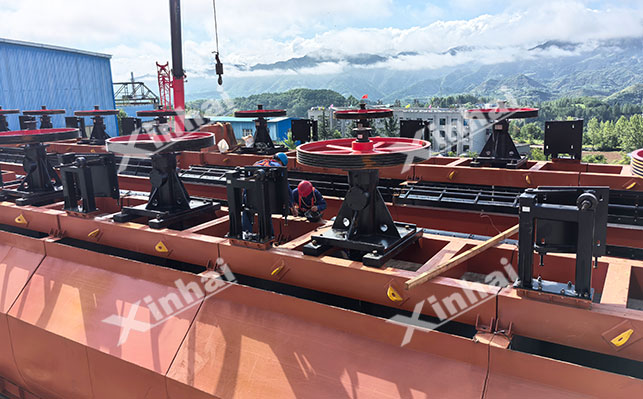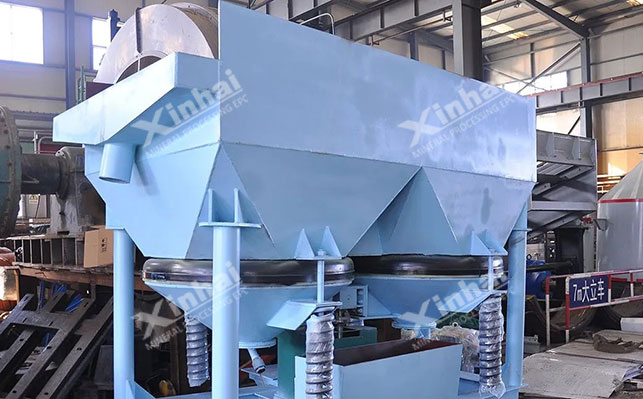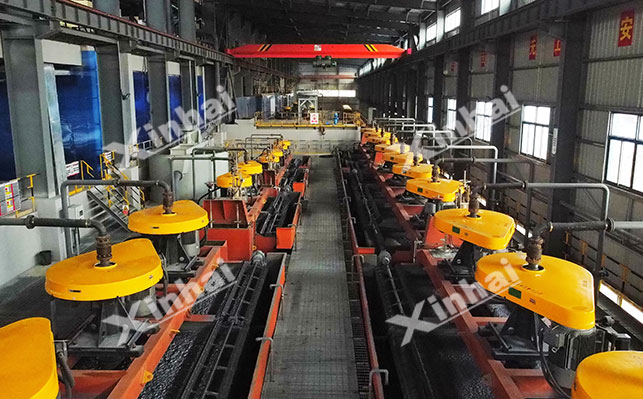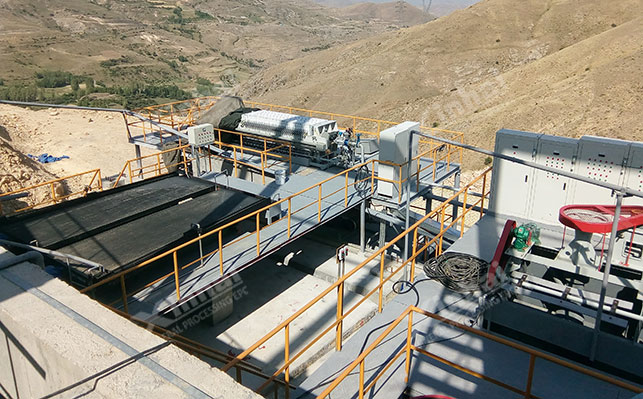
15311826613
Click to add WeChatAs a crucial non-ferrous metal, zinc is extensively used in galvanizing, alloy production, the battery industry, and other sectors. With the acceleration of global industrialization, the demand for zinc resources continues to rise, while high-quality zinc ores that are easily processed are becoming increasingly scarce. Consequently, selecting suitable zinc ore beneficiation methods based on the specific characteristics of different zinc ores has become a key focus within the industry. Due to significant variations in the formation conditions and elemental composition of zinc minerals, a detailed understanding of the types of zinc ore is fundamental to choosing the correct zinc ore beneficiation methods. This article will provide a detailed introduction to the types of zinc ore and their corresponding zinc ore beneficiation methods!
Zinc ores can be divided into three main types based on their chemical composition and mineral morphology: zinc sulfide, zinc oxide, and mixed zinc minerals. These three types of ores differ significantly in crystal structure, surface properties, and beneficiability.
Zinc sulfide ores: These are currently the main source of zinc metal. Their main mineral is sphalerite, often associated with galena. Associated minerals include pyrite, chalcopyrite, and gangue minerals.
Zinc oxide ore: mostly formed from zinc sulfide ore through supergene oxidation. The main minerals are smithsonite, hemimorphite, and zinc siliceous ore, with associated minerals mainly consisting of iron oxides (limonite) and clay minerals.
Mixed zinc ore: contains both zinc sulfide and zinc oxide. Its mineral composition is complex, often exhibiting characteristics such as "closely intergrowth of sulfide and oxide minerals" and "significant differences in the degree of oxidation within the same ore body."
The fresh cleavage surfaces of zinc sulfide exhibit natural hydrophobicity, with contact angles reaching 60-75 degrees, and high density. Therefore, flotation is often used as the primary method, while gravity separation is used as an auxiliary means for the recovery or pre-enrichment of coarse-grained minerals.

The flotation of zinc sulfide mainly utilizes the difference in surface hydrophobicity between zinc sulfide minerals and gangue, achieving separation through a reagent system. Based on the ore composition, it can be divided into two processes: preferential flotation and mixed flotation.
Preferential flotation: First float easily floatable minerals (such as copper and lead), then float zinc minerals, avoiding mutual interference. During flotation, butyl xanthate and butyl ammonium black reagent are used as collectors to enhance the collection of sphalerite; potassium dichromate is used to suppress zinc during lead flotation, and zinc sulfate and sodium sulfite are used to suppress pyrite during zinc flotation; pine oil is used as a frother to achieve effective flotation of zinc minerals. This method is suitable for copper-zinc-lead polymetallic ores.
Mixed Flotation: Typically, lead and zinc sulfides are first mixed and floated, then the mixed lead-zinc concentrate is separated. During flotation, the obtained mixed concentrate is first de-reagented by activated carbon adsorption or concentration washing, then potassium dichromate is used to suppress lead minerals, and zinc concentrate is floated. This method is suitable for minerals with tightly intergrowth of lead and zinc.

Gravity separation utilizes the density difference between zinc sulfide minerals and gangue to achieve separation, and is only suitable for coarse-grained disseminated zinc minerals.
Jig Separation: Suitable for processing zinc minerals with a particle size of +2mm. It uses pulsating water flow to stratify minerals according to density, and the enrichment ratio can reach 2-3 times.
Shaking Table Separation: Suitable for particle sizes of 0.074-3mm, it relies on the asymmetric reciprocating motion of the table surface to achieve mineral separation.
Spiral sluices: Used for scavenging or processing 1-0.075mm zinc minerals in placer deposits or tailings. They utilize centrifugal force and water flow for separation, offering high throughput.
However, gravity separation is limited in its ineffectiveness with -0.074mm fine mud and its difficulty in separating minerals with similar densities (such as sphalerite and pyrite).
These ores form in the oxidation zone of zinc sulfide deposits through weathering. Their crystal surfaces contain numerous hydrophilic groups such as hydroxyl and carbonate groups, resulting in poor natural floatability. Conventional sulfide ore collectors are difficult to effectively adsorb them. Beneficiation requires selecting flotation, chemical beneficiation, or roasting-flotation methods based on the mineral composition.

Zinc oxide flotation requires activation to improve the hydrophobicity of the mineral surface. The key is to convert the hydrophilic surface into a hydrophobic one.
Sulfide-Xanthate Flotation: Sodium sulfide is added during the process (in stages to avoid excessive inhibition), causing a zinc sulfide film to form on the surface of the zinc oxide mineral. Then, xanthate and fatty acids are used for collection. This method is mostly suitable for ores dominated by smithsonite.
Fatty acid flotation: This method utilizes the reaction of fatty acids with zinc ions to form hydrophobic zinc fatty acid salts, which are then flotated under strongly alkaline conditions (pH=11-13) with fine mud dispersed using sodium carbonate. However, this method has poor selectivity for calcite and dolomite, resulting in low concentrate grades and requiring multiple refining processes. It is mostly suitable for the beneficiation of zinc silicosite and hemimorphite.
The chemical method achieves separation by dissolving zinc oxide minerals, mainly including acid leaching, ammonia leaching, and chlorination leaching. This method has a high leaching rate but is highly corrosive to equipment and is only suitable for low-grade, difficult-to-beneficiate zinc oxide minerals.
Sulfuric acid leaching: This can be carried out at room temperature and pressure. During the stirring leaching process, the sulfuric acid concentration and liquid-solid ratio are controlled. After filtration and purification to remove impurities such as iron and manganese, electrolytic deposition yields metallic zinc. It is mostly suitable for the beneficiation of smithsonite. Ammonia leaching: This method is carried out in an ammonia-ammonium salt system, selectively dissolving zinc, copper, etc., while gangue remains insoluble. Sulfuric acid leaching is primarily used, achieving a zinc recovery rate of 85%. This method can directly produce electrolytic zinc and is suitable for high-impurity ores, but ammonia is volatile, resulting in high costs. It is suitable for beneficiation of zinc oxide ores containing impurities such as copper and cadmium.

Roasting-flotation involves first converting zinc oxide minerals into zinc sulfide through roasting, followed by recovery using conventional flotation methods. In the roasting stage, the ore is mixed with coke and roasted in a reducing atmosphere at 800-1000℃. The roasted mineral is then finely ground and fed into the flotation stage, where zinc sulfide is floated using xanthate. This method is suitable for difficult-to-float zinc oxide ores containing carbonaceous or organic impurities.
Mixed zinc ores exhibit significant variations in the ratio of zinc sulfide to zinc oxide and often contain secondary copper, lead, and iron minerals. Furthermore, zinc sulfide is often encapsulated by zinc oxide, or exhibits a complex structure where the two are mutually impregnated. The key to beneficiating this type of zinc ore is "sulfur first, then oxygen," to avoid mutual interference.

Zinc Sulfide Flotation: First, grind the ore to -0.074mm (70%-80%). Use conventional xanthate + butyl ammonium black reagent, combined with zinc sulfate + sodium sulfite to suppress pyrite. Control the pH value at 8-9, and recover sphalerite by flotation.
Zinc Oxide Flotation: After de-reagenting of zinc sulfide tailings, adjust the pulp pH to 10-12 with sodium hydroxide, and add sodium sulfide in stages to activate zinc oxide minerals.
This method is suitable for processing mixed ores of zinc oxide minerals, primarily hemimorphite and zinc silicosite. After zinc sulfide flotation recovery, the tailings are leached with sulfuric acid to remove zinc oxide, increasing the overall recovery rate by 10%-15% compared to full flotation.
Zinc Sulfide Flotation: The process is consistent with that for single sulfide ores, but tailings washing needs to be intensified to reduce interference from flotation reagents on subsequent leaching.
Chemical Leaching: For hemimorphite, sulfuric acid + fluoride is used to break silicon-oxygen bonds. The leaching temperature is controlled at 60-80℃, with a liquid-to-solid ratio of 2.5:1. For zinc silicosite, pressure acid leaching is used with a sulfuric acid concentration of 15%-20%. High temperature and pressure promote the dissolution of zinc silicosite, resulting in its leaching.
Leachate Purification: Zinc powder displacement method is used to remove impurities such as iron and copper. The purified solution is then sent for electrowinning to produce electrolytic zinc.
For mixed ores containing a large amount of coarse zinc sulfide, gravity separation pre-enrichment can significantly reduce the amount of subsequent processing, reducing energy and reagent consumption.

Gravity Separation Pre-enrichment: The crushed product is screened into three particle sizes: +5mm, -5mm +0.5mm, and -0.5mm.
The process involves several steps: First, coarse-grained sphalerite is recovered using jigs; second, medium-grained ore is cleaned using shaking tables; the gravity concentrate is then combined and fed into a zinc sulfide cleaning system; and tailings are combined with the -0.5mm particle size for subsequent processing.
Stage Processing: The gravity tailings are regrinded to 75% -0.074mm, then the remaining zinc sulfide is floated, followed by zinc oxide mineral flotation using sulfide-xanthate flotation.
This concludes the introduction to zinc ore types and different zinc ore beneficiation methods. In actual beneficiation plants, the choice of process is determined by the mineral characteristics. Zinc sulfide ore flotation is mature and efficient, while zinc oxide ore requires selection of flotation or chemical methods based on solubility and floatability. Mixed ores rely on staged co-processing. Xinhai Mining Equipment has extensive experience in zinc beneficiation and can customize processes for each mine. Currently, several projects in copper-lead-zinc beneficiation have been completed. Please feel free to contact us anytime if you have any needs.